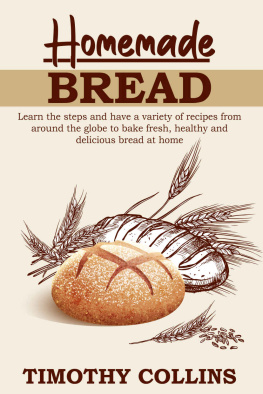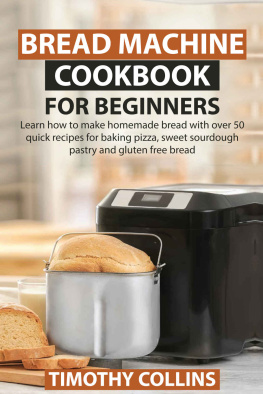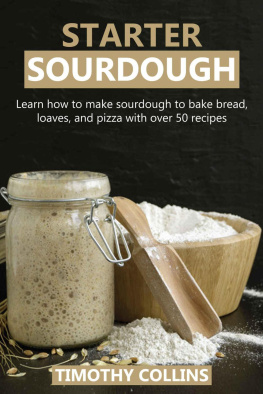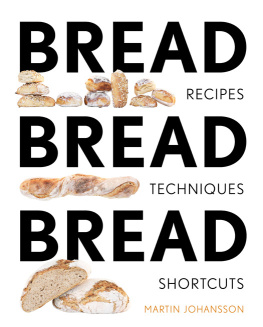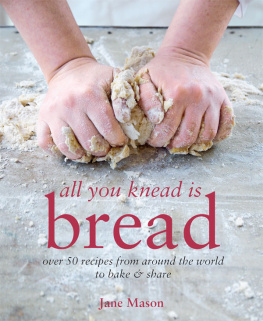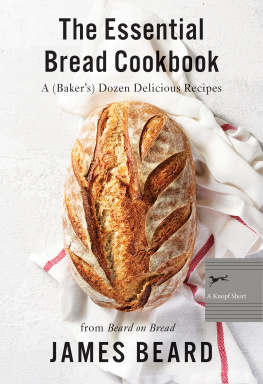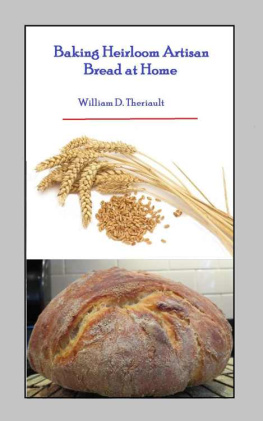Homemade Bread
Learn the Steps and Have a Variety of Recipes from Around the Globe to Bake Fresh, Healthy and Delicious Bread at Home
By
Timothy Collins
Copyright 2020 by (Timothy Collins) - All rights reserved.
This document is geared towards providing exact and reliable information in regards to the topic and issue covered. The publication is sold with the idea that the publisher is not required to render accounting, officially permitted, or otherwise, qualified services. If advice is necessary, legal or professional, a practiced individual in the profession should be ordered.
- From a Declaration of Principles which was accepted and approved equally by a Committee of the American Bar Association and a Committee of Publishers and Associations.
In no way is it legal to reproduce, duplicate, or transmit any part of this document in either electronic means or in printed format. Recording of this publication is strictly prohibited and any storage of this document is not allowed unless with written permission from the publisher. All rights reserved.
The information provided herein is stated to be truthful and consistent, in that any liability, in terms of inattention or otherwise, by any usage or abuse of any policies, processes, or directions contained within is the solitary and utter responsibility of the recipient reader. Under no circumstances will any legal responsibility or blame be held against the publisher for any reparation, damages, or monetary loss due to the information herein, either directly or indirectly.
Respective authors own all copyrights not held by the publisher.
The information herein is offered for informational purposes solely, and is universal as so. The presentation of the information is without contract or any type of guarantee assurance.
The trademarks that are used are without any consent, and the publication of the trademark is without permission or backing by the trademark owner. All trademarks and brands within this book are for clarifying purposes only and are the owned by the owners themselves, not affiliated with this document.
Table of Contents
Introduction
Bread is a staple meal made from a flour and water dough, usually by baking. It has been a popular food in large parts of the world throughout documented history and is one of the pioneer human-made foods, having been of great significance since the dawn of agriculture. Processes such as reliance on naturally happening sourdough microbes, chemicals, industrial-produced yeast, or high-pressure aeration can leaven the bread. Commercial bread typically includes additives to enhance taste, texture, color, shelf life, nutrition, and production ease. Food plays an essential role in religious and secular practices. Bread is one of the oldest foodstuffs prepared. Proof from 30,000 years ago showed starch residue on the rocks used for pounding plants in Europe and Australia. Bread is the staple food of Central Asia, Middle East, North Africa, Europe, and in European-derived civilizations such as those in the Americas, Australia, and South Africa, as opposed to the areas of South and East Asia where noodles and rice are the staples. Usually, bread is made from a wheat-flour dough, which is produced with yeast, allowed to rise, and finally baked in an oven. Adding yeast to the bread explains the air pockets, which are usually found in bread. Many wheat species (including spelled, emmer, einkorn, and Kamut) also make bread from the flour. non-wheat cereals containing rye, barley, maize (corn), oats, sorghum, millet, and rice, have been used to produce bread, but generally in conjunction with wheat flour, with the exception of rye, since they have less gluten. Bread is a symbol of essential needs and living conditions at large in many cultures. For example, a "bread-winner" is the major economic contributor to a household and has nothing to do with the actual supply of food.
Therefore, bread is an excellent source of complex carbohydrates, supplying the body with the energy it needs, and playing a significant role in regulating blood glucose levels. Most forms of bread contain low-value vegetable protein that is low in fat. They also contain B vitamins, vitamin E, and trace elements such as iron, potassium, calcium, and selenium, which are highly supplied throughout the body. Vitamin B significantly contributes to the protein metabolism and cell replacement, vitamin E is an active antioxidant, iron is necessary for growth, and cell oxygenation and potassium for healthy cell function. Calcium contributes to bone density, and it is an essential antioxidant to selenium. For a typical worker, his quintessential prodigy is his right equipment and tools, and this is very true in the bakery industry as well. Bread Baking involves delicious and appealing to the masses and thus needs different materials for the same task. The equipment is highly sophisticated and commercialized, particularly for the company bakery compared to those utilized in the houses and for other personal reasons. With the high-tech equipment, several tasks can be completed in the shortest possible time because they give you an advantage over others in this competition, and bakery equipment will complete the job for you with high quality in the shortest time possible.
Bread baking requires scientific techniques and careful measurements of the necessary ingredients in the various baking products. Special utensils are available which measure the number of ingredients used in each baking process. These utensils include preparing the delicious baked produce. Such equipment includes dry cups for weighing, weighing plates, measuring spoons, and cups for measuring liquids.
Chapter 1: Bread A Staple Food
The staple food is a food that is regularly consumed and in such amounts, as to constitute a dominant portion of a healthy diet for a given person, providing a significant fraction of the energy needs and usually comprising a substantial proportion of the intake of other nutrients. A staple food of a particular society can be consumed as frequently as every day or every meal, and most people survive on a diet based on just a few staples of food. Particular staples vary from place to place, but generally, foods that contain one or more of the macronutrients needed for survival and health are inexpensive or readily available: carbohydrates, proteins, and fats. Typical examples include roots, tubers, plants, legumes, and seeds. Early agricultural civilizations valued the foods that they defined as staples because they are generally suitable for storage over long periods without decay, in addition to providing essential nutrition. Such non-perishable foods are the only potential staples during shortage seasons, such as dry seasons or cold temperate winters, against which harvest times have been stored. Wider variety of foods can be available during seasons of abundance. For thirty thousand years, bread has been a part of the human diet. In the form of carbohydrates and significant nutrients, dietary fibers, and phytochemicals, it provides energy. Yet there's a lot of misunderstandings around bread. Bread is made from grains of cereals such as wheat, rye, and oats, so its nutrient content is primarily determined by the grain content. Bread's nutritional composition depends on whether the meal used to generate the bread is white or whole meal flour, as well as the inclusion of ingredients such as seeds or fat. Approximately half of our daily energy will come from carbohydrates, mainly starches. Therefore bread is a significant component of a healthy and balanced diet along with potatoes, pasta, and rice. Bread contains many proteins, and only small quantities of fat (unless added during production). EU citizens eat an average of 50 kg of bread per person per year, or around 137 g (3-4 slices of white bread) a day. Consumption, however, varies: German and Austrian people consume the most (80 kg per person per year) and the least (less than 50 kg) in Ireland and the UK. Across the UK and Germany, there is a slight but steady decrease across bread consumption (1-2 percent per year).
Next page
